Rare Rides Icons: The History of Stutz, Stop and Go Fast (Part X)

The reborn Stutz brand introduced its Blackhawk in 1971. It was a mostly hand-built and Virgil Exner-styled coupe atop a late Sixties Pontiac Grand Prix platform. Despite its rather common underpinnings, the Blackhawk found an immediate clientele among the very wealthy who were of a showbiz variety. After Elvis took delivery of the first Blackhawk sold (prototype two, to be precise), celebrities of various stature placed their orders with Stutz.
This gave the Blackhawk status and immediate luxury credibility, however garish and Extra Super Seventies it all was. Thus, Stutz increased the price of the Blackhawk throughout its debut decade and effectively doubled its profits by the turn of the Eighties. By 1981 the Blackhawk’s base price was $84,500 ($279,242 adj.). But Stutz knew it would have to update its coupe to keep buyers coming back for more, and the majority of updates took the form of trim differentiation and cost-cutting. Let’s talk about the multiple generations of Blackhawk.
First, a caveat: Though these were considered different generations, the differences between said consisted mostly of minor changes to Exner’s original design. Having said that, there were a few notable features that were exclusive to Blackhawk’s debut year in 1971.
Blackhawk’s split windshield in 1971 had several repercussions on the design of the car: Specially-made and separate windscreens, and a dashboard shaped like a V against the windshield. And since the windscreen protruded to a point, the cowl also needed its own special shape. It was all fairly complicated stuff.
All those things went away for the “second generation” Blackhawk of 1972. The windscreen adopted a single-piece design, much like any other passenger car. It had a much simpler shape, and meant the dashboard was easier to build and fit, and so were the cowl and hood. Likely, the new front glass was just directly from the Grand Prix.
There were more glass changes in 1972, which accompanied a door swap. In 1971 the Blackhawk had its own door design. It included a unique rear-hinged door handle, and the door contained one window with a separate vent. In 1972, the vent went away and a new piece of glass appeared behind the door within the previously all-metal B-pillar. Those familiar with the Grand Prix will note that the Stutz adopted the standard Grand Prix door and side window in 1972. This was most certainly a cost-saving effort on the part of Stutz, since creating a unique door was not a small effort.
One of the most unique features of the Blackhawk – its exposed rear tire – was also changed for 1972. In the model’s debut year, the tire was at the very back of the trunk. Its lower quarter stuck out and acted effectively as a bumper for rear impact. It was flanked by Italian-looking circular tail lamps.
The following year, the tire looked like it migrated further up into the trunk, as a new bumper assembly appeared. What actually happened was the tire stayed in the same place, but the Blackhawk got a bit longer as it adopted the rear clip of the Grand Prix.
The whole rear clip of the GP was grafted on, with the addition of chromed horizontal bars that covered standard Grand Prix tail lamps. Formerly functional side exhausts became decorative and were replaced by dual rear exhausts. On the original Blackhawk, the fuel filler was within the rear tire assembly. With the Grand Prix edits, it moved behind the rear license plate. At the front, the chromed bars covering the tail lamps were replicated and wrapped around the grille to provide a new visual connection to the rear.
Through the questionable and money-saving edits of 1972, the power underneath the Blackhawk remained the same. Though the main engine used or advertised was the Grand Prix’s top 455 cubic inch V8, buyers sometimes selected other power plants. Also available from the General Motors family, the 454 (7.4-liter) big block from the likes of the Chevrolet Monte Carlo was supplemented by two Cadillac engines, the 472 (7.7 L) and 500 (8.2 L). A couple of Ford engines were used in 1971 and 1972 as well: The 429 (7.0 L) Cobra Jet from the Mustang, along with the 460 (7.5 L) from the Thunderbird.
In 1973 there was a new generation of Blackhawk, and more minor edits were made. Worth a mention, the Stutz was forced to branch off on its own a bit in this particular year. The accompanying Grand Prix moved on to a new third generation and the rear-drive A-body, but Blackhawk remained on the 1969 Grand Prix platform. In particular, that was a stretched version of the A platform that GM called G-body.
The window aft of the door went away in 1973, and though the old Grand Prix door continued unchanged it used a new dogleg door handle this year. Elsewhere, a new chromed road wheel style was available in addition to the chrome wires of 1972.
It seemed as though Stutz used up some parts it had lying around in 1973. Some cars from that model year used the old rear end and wire wheel style, while others used a revised rear end with the wire wheels, and others had both updated parts. All 1973 Blackhawks used the updated door and window design.
The updated rear end of the 1973 Blackhawk had two separate amber lenses and used a new chrome bumper. The bumper was not a Pontiac part, but rather unique to the Blackhawk. It had minimal ornamentation and was a clean horizontal line that arrived at a very slight point in the middle. This year the spare tire was no longer fully exposed, but instead mostly obscured by a leather cover that matched each Blackhawk’s interior.
Blackhawk stayed largely in stasis from 1974 through 1976, as it maintained its 1971 platform and engines. The coupe’s MSRP continued to escalate rapidly as celebrity orders streamed forth. However, between 1975 and 1976 some mixed messaging occurred between the people who ran Stutz, the people working there, and the desire of one or more celebrities for a convertible Blackhawk. It was to be the most expensive car in the world: d’Italia.
The story began with a standard 1974 Blackhawk that happened to be painted green. Stutz held on to this one for some reason (probably the color) and asked a man by the name of Dan Steckler to use it in a little project. The ask was to convert the Blackhawk into a convertible. Steckler was a then-employee of Stutz and worked on the new car in sunny California.
Steckler worked to chop the thick roof off the Blackhawk and replaced it with a canvas one. The reworked car looked much the same as the coupe, just with a soft roof. Since it was a very special and exclusive car, it needed an exclusive-sounding name. d’Italia would do, a callout to the fact that all Stutz cars were built in Italy. The car was finished with a luxurious white interior that displayed much ruching, and an exterior with a two-tone pearl white and banana cream yellow theme.
Here’s where the story gets a bit mixed, dependent upon who’s telling the tale. According to one source, the d’Italia was completed at the request of Elvis Presley. When presented with the $100,000-plus ($551,831 adj.) d’Italia sometime in 1975, The King was not pleased. Instead, current Stutz customer Evel Knievel bought it. At some point, the d’Italia passed on to ownership by Wayne Newton. Throughout the decades it changed owners and paint colors until the estate of Mr. Newton sold it off quite recently. At that point, it passed into the hands of the Petersen Automotive Museum.
The other version of the d’Italia’s backstory is quite different. The convertible’s creation was requested internally, by Stutz management. But about the time it was finished sales of the domestic convertible were on a steep decline, due to (proposed but never enacted) US roll-over regulations. Stutz management felt convertibles weren’t saleable in those conditions, especially one with a $100,000 price tag. There was also disagreement over the name d’Italia, which sounded too foreign when Stutz was an “All-American” luxury brand. Only after the decision was made not to build the d’Italia was the convertible offered to outside buyers.
No matter which story one chooses to believe, it’s interesting that Stutz shot PR pictures for a car it wasn’t sure it wanted to sell. In the end, with a press pack ready, the d’Italia idea was scrapped. Either one or two examples were completed, though it seems there are only pictures of one. The company would return to the idea of a convertible a few years later, though.
Elsewhere at Stutz, there were preparations underway for a redesign of the Blackhawk. Management realized the car could not continue on its Sixties platform forever when the luxury coupe was moving on to a more modern (and downsized) future. Stutz hired Paolo Martin, the famed Pininfarina designer behind the likes of the Rolls-Royce Camargue, Fiat 130 coupe, motorcycles, and some watches to draw up a new Blackhawk.
They’d put Martin’s Blackhawk designs into use eventually, but not before dragging out the aged coupe in its initial guise for the rest of the Seventies. We’ll finish the original Blackhawk’s evolution next time, and talk about the convertible the company actually produced.
[Images: Stutz]

Interested in lots of cars and their various historical contexts. Started writing articles for TTAC in late 2016, when my first posts were QOTDs. From there I started a few new series like Rare Rides, Buy/Drive/Burn, Abandoned History, and most recently Rare Rides Icons. Operating from a home base in Cincinnati, Ohio, a relative auto journalist dead zone. Many of my articles are prompted by something I'll see on social media that sparks my interest and causes me to research. Finding articles and information from the early days of the internet and beyond that covers the little details lost to time: trim packages, color and wheel choices, interior fabrics. Beyond those, I'm fascinated by automotive industry experiments, both failures and successes. Lately I've taken an interest in AI, and generating "what if" type images for car models long dead. Reincarnating a modern Toyota Paseo, Lincoln Mark IX, or Isuzu Trooper through a text prompt is fun. Fun to post them on Twitter too, and watch people overreact. To that end, the social media I use most is Twitter, @CoreyLewis86. I also contribute pieces for Forbes Wheels and Forbes Home.
More by Corey Lewis
Latest Car Reviews
Read moreLatest Product Reviews
Read moreRecent Comments
- Hari Your route home sounds like the perfect stretch for a car like the Alfa Romeo Giulia. Its renowned handling and dynamic performance make it an ideal match for those curves. For enthusiasts or potential owners interested in understanding all the capabilities of the Giulia 2017, the owner’s manual is an invaluable resource. Check it out here: https://chatwithmanuals.com/automobiles/2017-alfa-romeo-giulia-owners-manual/. Our AI-powered chat makes navigating the manual simple, helping you quickly find specific details about the car's features and specs. Perfect for making the most out of those driving moments and truly understanding your vehicle!
- Dale I'd consider the RAV4 if the Prime were on the table as paying for gas is for suckers. Otherwise, we have a couple of Mazdas and they are swell. I've driven older versions of both and the CX-5 is a nicer place to live.
- Haran Spot-on review of the Mercedes-AMG GT’s price adjustments and new features! For those intrigued by the all-wheel drive and enhanced features of the latest model, you can delve deeper with the complete operator's manual available here: https://chatwithmanuals.com/automobiles/mercedes-amg-gt-operators-manual-edition-c2020/. It’s a fantastic resource for understanding all the specs and new additions without getting bogged down by the complexity typically associated with car manuals. Chat with the manual using AI to quickly find exactly what you need to know about this sporty beast. Perfect for those who appreciate detailed insights on their luxury investments!
- Flashindapan Beautiful color combinations. I assumed they stop selling the TT here at least five or six years ago.
- Carson D Just don't be the whistleblower who reports on the falsification of safety data. That's a deadly profession.



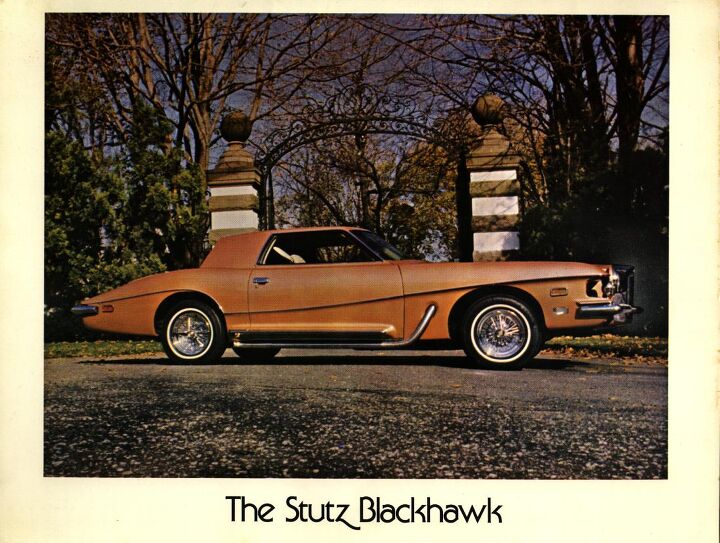



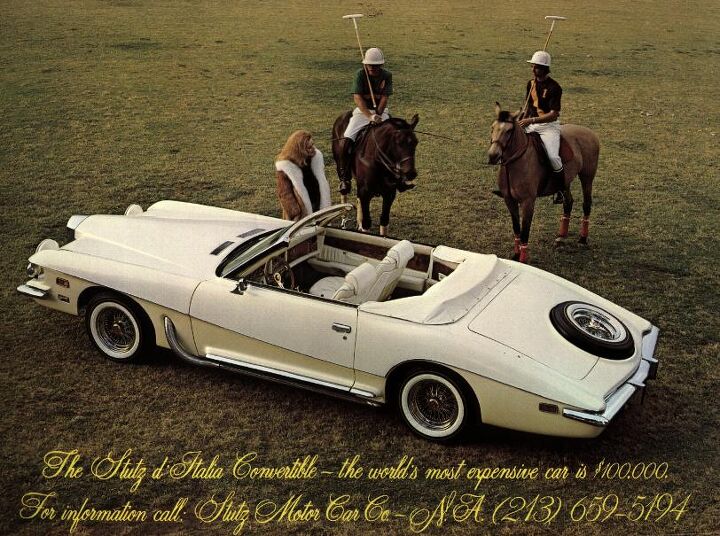
















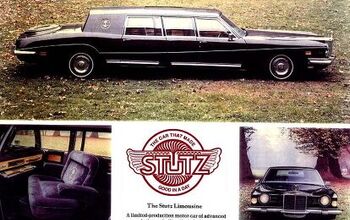

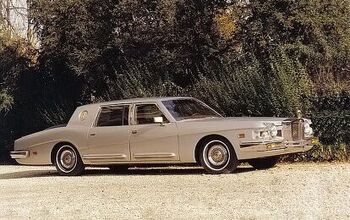
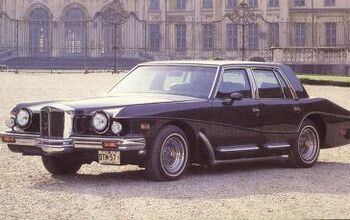
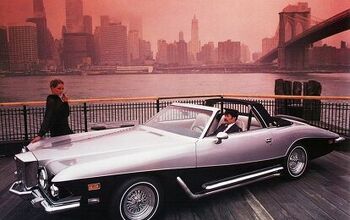










Comments
Join the conversation
Did Evel Knievel wear jumpsuits too, or could he jump without a suit?
It’s almost fantastic in it’s awfulness. Going from Elvis to Evel Knievel and eventually to Wayne Newton somehow really suits this car.